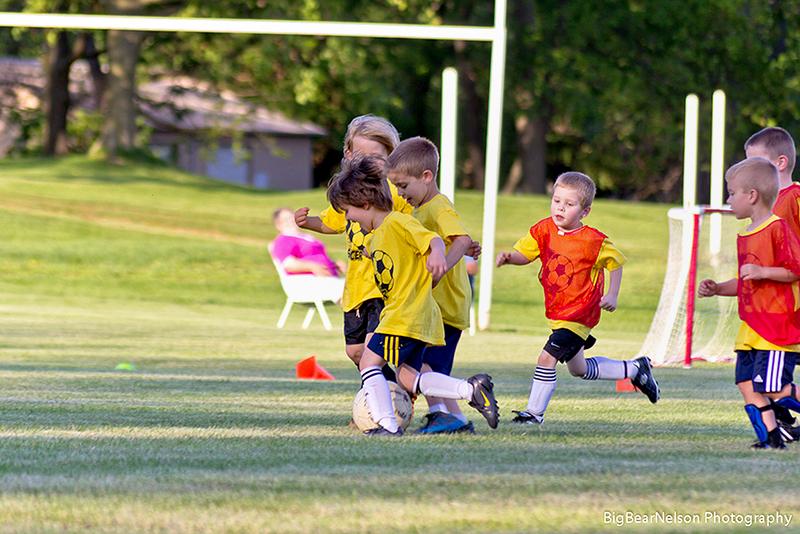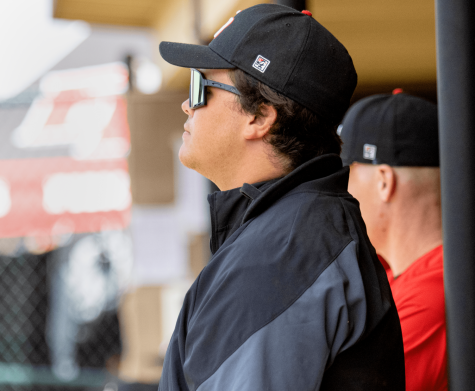What’s Missing in Youth Soccer in America
May 2, 2013
A pocket of ocean separated Nick Lusson from his Bay Area home. Being thousands of miles away from his own doorstep, he was at peace.
Lusson is one of the many spectators observing the youth academy of FC Barcelona, a club argued to be the best in the world. The facilities provided for these young players are complemented by the knowledge and care given by a number of coaches who ensure, through careful coaching, that they will carry on the club’s tradition of soccer excellence.
As the technical director of Dublin United Soccer, Lusson was caught in the transpiring developments before him: a contagious sense of camaraderie displayed by a group of players perfecting their gift with a ball – all the while exerting the highest level of competitive fire in pursuit of victory.
And here he was, resting upon a field-side gate, analyzing a group of 9-year olds gliding across the pitch.
“That was definitely a wake-up call,” Lusson said. “For me, it just showed how far away we are as a country.”
For Lusson, it was a harsh reality. For millions, it’s the standard. As an American, it’s unheard of.
Brazilian kids don’t ‘unplug’ from the game in that sort of way and are constantly playing, talking about it, or watching it.
— Nick Lusson
In truth, the youth development of soccer in America is flawed. There fails to be a clear consensus of how we should teach the game to our youth, a lack of playing identity and a nationally tainted perception of the games importance, which has ultimately stunted its growth in America.
With all these concerns, the prominence of youth development relies on how we teach the game to our players. Countries around the world have experienced coaches and mentors who have played the game professionally. They are able to share their knowledge and skills with players at a very young age.
With this guidance, they continue to perfect particular facets of their game, whether it is their technical ability with the ball, their movement of the ball or their smart, effective defending.
In America, the youth are being taught by volunteer parents and credentialed coaches who do not emphasize the importance of player development. These coaches tend to be more concerned about winning games rather than developing players’ abilities and techniques. As a result, the development of America’s youth falls behind in comparison to Spain, Italy and England, who will soon rise to national prominence because of their emphasis on player growth.
The lack of development from coaches is only prominent if a player accepts the teachings fueled behind his or her love for the game. Countries eat, sleep and breathe soccer. American players do not. Can you give us a sense somewhere here of exactly what the skills, drills and other teaching involves in certain “soccer” countries, versus the U.S? That would add a lot to the picture.
“American kids are connected to soccer at practices and games but when away from those environments, they focus on a million other things,” Lusson said. “Brazilian kids don’t ‘unplug’ from the game in that sort of way and are constantly playing, talking about it, or watching it.”
Lusson references soccer as life itself for children in many countries. Youth players in the U.S. are bombarded with outside distractions that tempt their interests and drag them away from further development in soccer. Brazilian kids in particular do not have much to hold on to figuratively and literally, but a soccer ball.
As a result, Brazilians, along with other kids across the world, embrace the game, respect its history and appreciate the hope it has given them in their life.
Unlike the youth in foreign countries, American children ‘unplug’ to focus on other American sports. Soccer does accompany youth baseball, basketball and football leagues in terms of popularity but fails to withstand as players get older.
A strong contingent of American kids partake in youth soccer but veer to hardwood, the gridiron or the diamond to further their participation in sport. With soccer, the interest isn’t there. There is a lack of draw. There is simply no one to look up to.
“Other sports come first in America and that is why there is a lack of tradition here,” Florian Reppin, a German native, said. “Children in Germany look up to soccer stars, unlike America, where they idolize basketball, baseball and football stars. Soccer is not a priority for Americans.”
This lack of tradition contributes to a playing identity that is nonexistent for American soccer. German players in particular have a playing identity fostering athleticism, team discipline, flawless technical ability and brute strength. The style of play in Brazil and Spain is free flowing, celebrate the beauty of technical ability and quick combination passing in the attack half.
America, on the other hand, does not have a distinct style of play, which ultimately hurts the future development of players. What do young players work towards to continue their development so they can one day play at an international level?
The development of a soccer culture is essential to youth development within the game. Soccer has grown in past years but still sits years away from paralleling the youth development programs overseas.
There are times of promise in a seemingly uncertain future in American soccer and with a commitment as
a country to contend amongst the best in the world, soccer in America will surely take flight and rise to prominence in the world’s soccer landscape.















